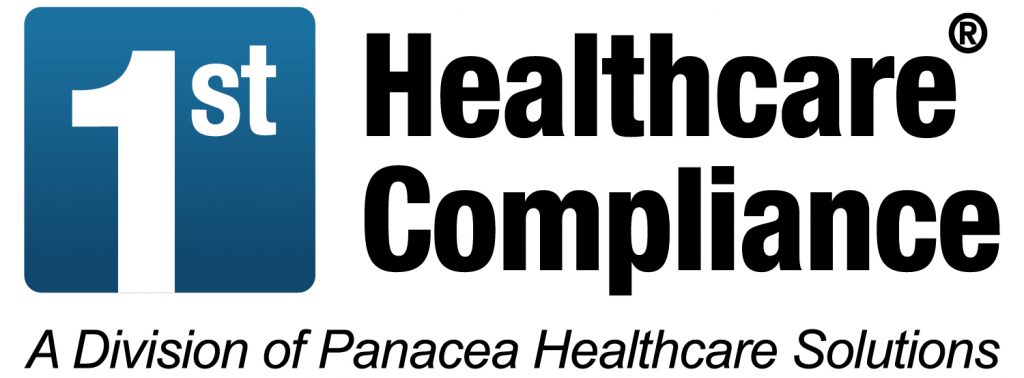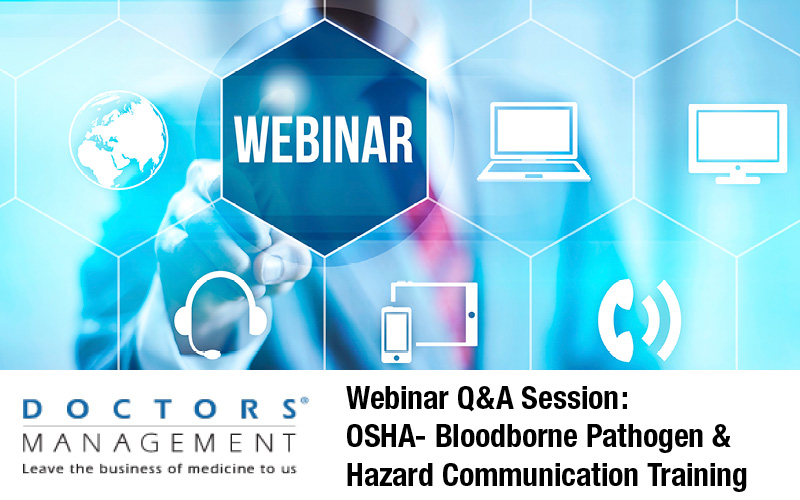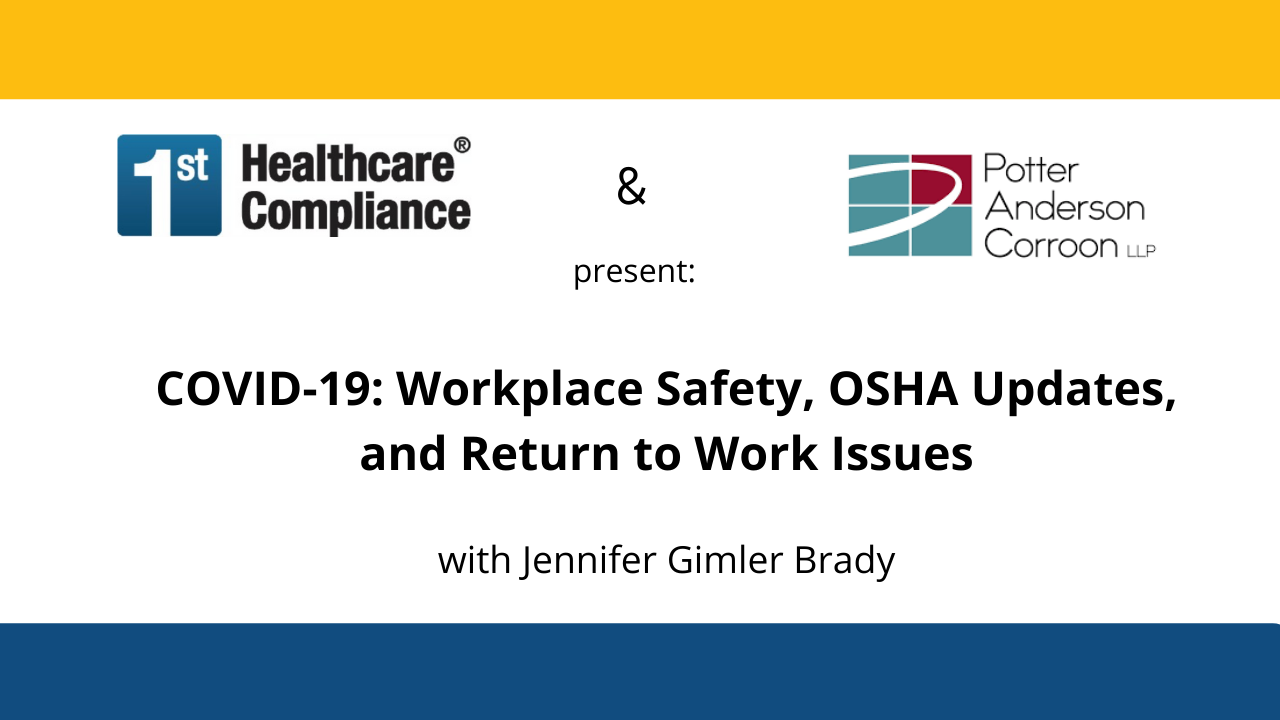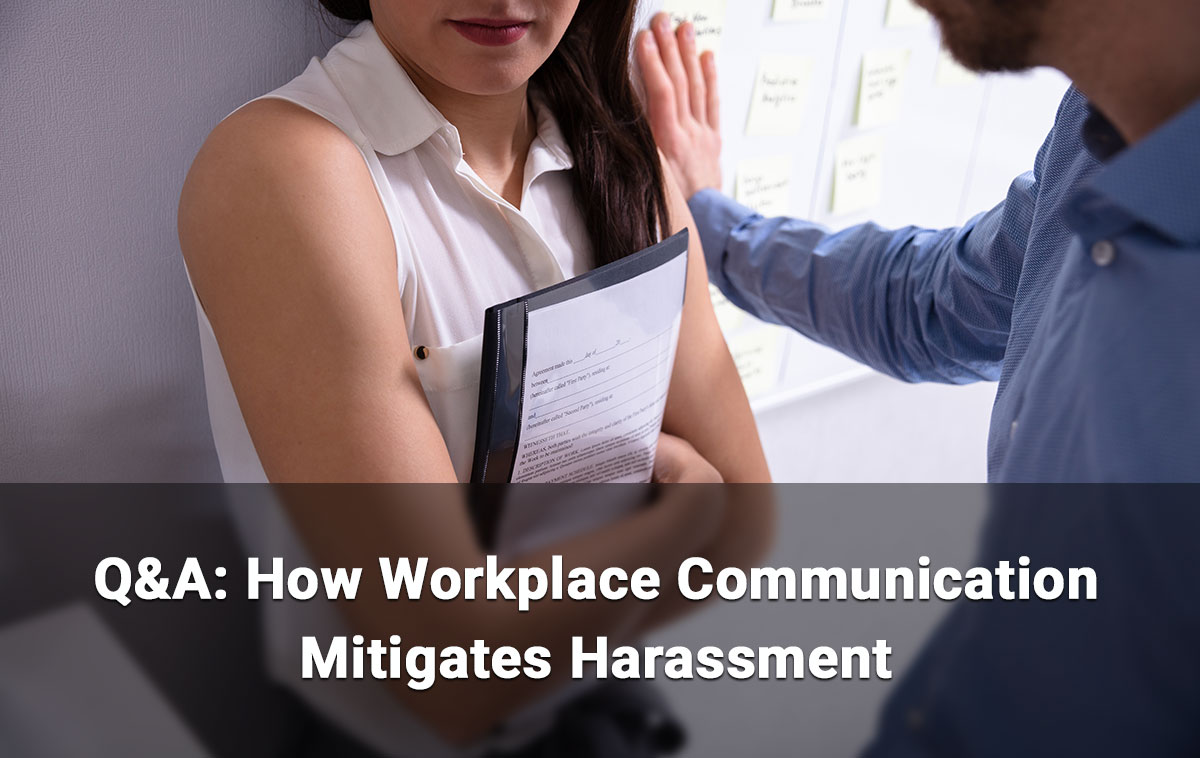Webinar Q&A: OSHA- Bloodborne Pathogen and Hazard Communication Training
First Healthcare Compliance hosted two informative webinars on OSHA’s Bloodborne Pathogen and Hazard Communication Standards with Kelly Ogle, BS, MS, CMPM, CHOP® of DoctorsManagement, LLC. (Bloodborne Pathogen Training Webinar and Hazard Communication Training Webinar).
For employers and employees, Kelly addresses some commonly asked questions regarding compliance with these two OSHA Standards:
Q: Who is covered by the Bloodborne Pathogen Standard?
A: All employees with risk for exposure to bloodborne pathogens.
Q: When are you required to get tested after a needle stick injury?
A: You must be tested immediately after a needle stick injury. Your blood will be drawn for a blood panel. Your physician will determine when you should come back for subsequent testing.
Q: Can my blood be drawn at my office?
A: Yes; if there is a licensed healthcare provider available to review your results. They will determine follow-up and possible treatment.
Q: Does every chemical used in the office need to be on the chemical list?
A: As far as OSHA is concerned, the only chemicals that are required to be on the list are those hazardous chemicals used in the office. If the chemical you are using is used in the same manner as in the household, such as Windex, it does not need to be on the “Hazardous Chemical List.” Although I recommend that if there are any chemicals that could cause harm to employees, whether hazardous or non-hazardous, it is a good idea to carry the SDS for those chemicals also.
Q: Do we have to use the pictograms on our own labeling of containers in the office?
A: It is not required, but OSHA says it wouldn’t be a bad idea to have them on your chemicals anyway.
Q: Is there a specific kind of eye wash station that we need to have?
A: No specific eye wash station is recommended. However, bottles are not sufficient. If you get something in your eye, you are supposed to flush the eyes for at least 15 minutes. This cannot be done with the bottles because they only hold a small amount of water.







